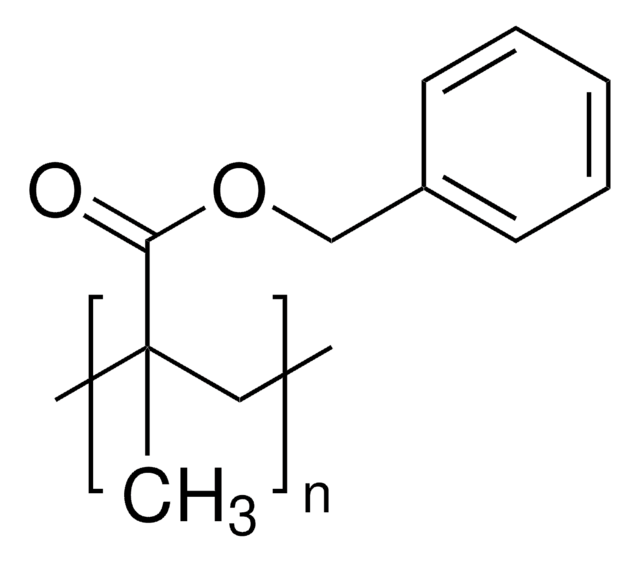445754
Poly(isobutyl methacrylate)
average Mw ~130,000
Synonym(s):
Isobutyl methacrylate polymer, Poly(isobutyl methacrylate)
About This Item
Recommended Products
mol wt
average Mw ~130,000
reduced viscosity
35-45 cm3/g(20 °C)(lit.)
acid number
≤1 mg KOH/g
transition temp
Tg 65 °C
solubility
alcohols and water: insoluble
aromatic and aliphatic hydrocarbons, esters, ketones, glycol ethers and chlorinated hydrocarbons: soluble
density
1.05 g/mL at 25 °C
SMILES string
CC(C)COC(=O)C(C)=C
InChI
1S/C8H14O2/c1-4-5-6-10-8(9)7(2)3/h2,4-6H2,1,3H3
InChI key
SOGAXMICEFXMKE-UHFFFAOYSA-N
Looking for similar products? Visit Product Comparison Guide
General description
Application
Storage Class
11 - Combustible Solids
wgk_germany
WGK 3
flash_point_f
Not applicable
flash_point_c
Not applicable
ppe
Eyeshields, Gloves, type N95 (US)
Choose from one of the most recent versions:
Certificates of Analysis (COA)
Don't see the Right Version?
If you require a particular version, you can look up a specific certificate by the Lot or Batch number.
Already Own This Product?
Find documentation for the products that you have recently purchased in the Document Library.
Customers Also Viewed
Our team of scientists has experience in all areas of research including Life Science, Material Science, Chemical Synthesis, Chromatography, Analytical and many others.
Contact Technical Service









